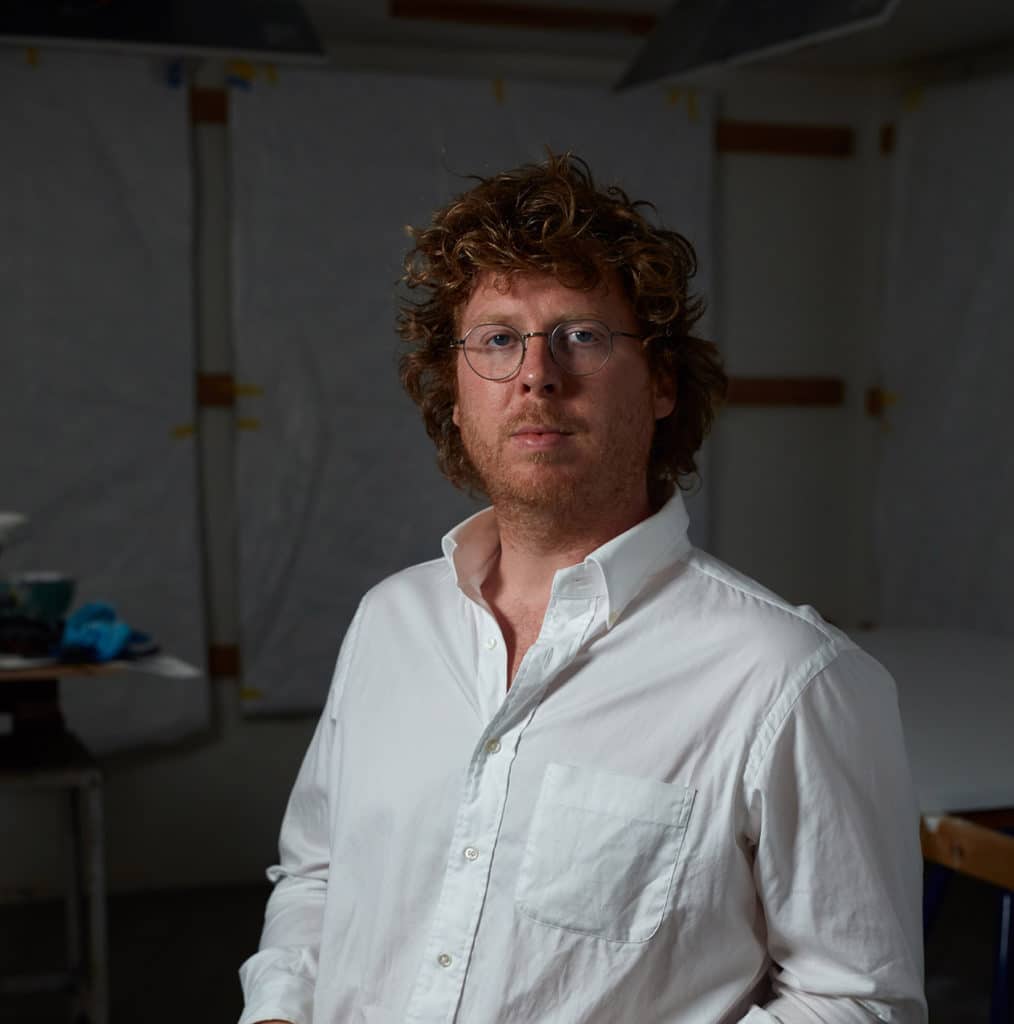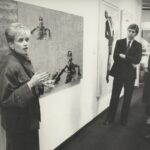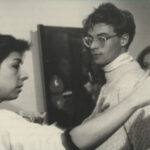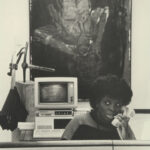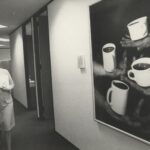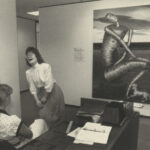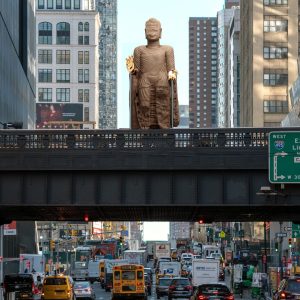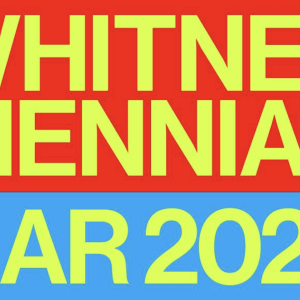This morning, when The Andy Warhol Foundation for the Visual Arts announced their roster of Spring 2022 Grantees, CalArts visiting faculty Matt Connolly was listed among its impressive honorees.
As a Curatorial Research Fellow, Connolly will receive a grant of $50,000 to support new scholarship on contemporary artistic practice, with a particular focus on the experimental and under-recognized. Connolly, co-founder of Equitable Vitrines—a Los Angeles-based nonprofit that organizes exhibitions and educational programming, most recently at REDCAT and Rudolf Schindler’s Fitzpatrick-Leland House—will use the funds to expand on his work exploring the compelling, yet little-known 1980s art program at First Bank System, a regional bank based in Minneapolis.
This same project was the subject of the graduate seminar Connolly and his partner and Equitable Vitrines co-founder Ellie Lee conducted at CalArts last semester, titled “Pseudo-Events (First Bank System).” When Sharon Lockhart, co-director of the Program in Photography and Media at the School of Art, invited the pair to teach at CalArts, she encouraged them to develop curricula that would convey the essence of Equitable Vitrines. As Connolly explains, “Since its founding, Equitable Vitrines has facilitated and analyzed encounters between contemporary artists and non-practitioners out of the conviction that such encounters may reveal the real social utility of art in our era.”
So, while doing research to develop the course, Connolly came upon information about curator Lynne Sowder and the $5 million, 3,000-piece art collection she began assembling for First Bank System in 1980. Displayed throughout office buildings and bank branches housing 8,600 employees, the collection was formally and conceptually challenging, including works from Barbara Kruger, Cindy Sherman, Andy Warhol, and more. And yet, by 1986, an internal survey found that 69% of the staff did not like the bank’s collection. In response, Sowder designed several initiatives and opportunities for workers to engage with the art, offer their opinions, influence acquisition, and design in-house exhibitions.
With very little information on the First Bank System Visual Arts Program publicly available (likely because of its dissolution in 1990), and seeing it as both an insightful case study and event of art historical significance, Connolly will seek to research and interview those involved in the program and assemble a material record as part of his Warhol Fellowship.
“Like so many things in the art world, there are significant connections between CalArts and the FBS story,” said Connolly. “A large portion of my research so far would not have been possible without the guidance of Dorit Cypis, a CalArts-trained artist who lived in Minneapolis through the 1980s, and was involved in the First Bank program. Ellie and I were happy to be able to bring Dorit in to visit our class and I like to think that we were facilitating an intergenerational exchange that affirmed our students’ sense of belonging within an art-historically consequential lineage.”
The Warhol Foundation’s morning announcement detailed a total of $3.9 million in grants awarded to 50 organizations from 18 states and the District of Columbia to support visual arts programs, exhibitions, and curatorial research projects “that contribute to artistic flourishing around the country.” It went on, “As social, political, and economic uncertainties unleashed by the turbulent events of recent years continue unabated, institutions and organizations are finding innovative and resourceful ways to respond to the needs of artists and their communities.”
